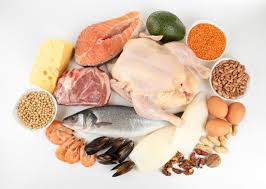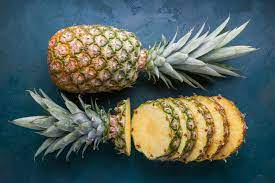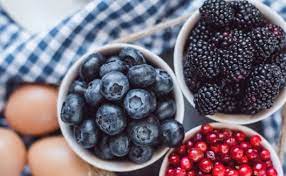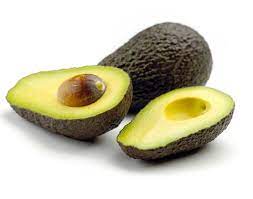Top 10 Best Foods to Eat After a Facelift for a Fast Recovery
Recovering from a facelift requires careful attention to your diet to support healing and minimize swelling and bruising. Certain nutrients play a crucial role in speeding up the recovery process, such as protein, vitamin C, zinc, and bromelain. Incorporating these nutrients into your diet can make a significant difference in how quickly you heal. Below are the top 10 best foods to eat after a facelift to ensure a smooth and fast recovery.
1. Lean Protein Sources
Why: Protein is essential for tissue repair and muscle recovery, making it a vital part of your post-facelift diet. Protein helps rebuild collagen and skin tissues, which is crucial after any surgical procedure.
Best Choices: Chicken breast, turkey, tofu, eggs, and fish like salmon or tuna are excellent sources of lean protein. These options are easy to digest and can be prepared in various ways to suit your post-surgery palate.
Pro Tip: If you find it difficult to consume enough protein through solid foods, supplement your intake with a high-quality protein shake. Products like Orgain Organic Protein Shake or Premier Protein Plus Energy and Immune Support Shake offer a convenient way to ensure you’re meeting your protein needs during recovery.

2. Citrus Fruits
Why: Citrus fruits like oranges, grapefruits, and lemons are rich in vitamin C, which is essential for collagen production and wound healing. Vitamin C also has antioxidant properties that help reduce inflammation and support the immune system.
Best Choices: Oranges, grapefruits, lemons, and limes. These fruits can be eaten whole, juiced, or added to smoothies for a refreshing and nutrient-packed boost.
Pro Tip: Supplement your intake of vitamin C with Emergen-C Immune+ both before and after surgery to bolster your immune system and enhance your body’s natural healing processes.
3. Pineapple
Why: Pineapple contains bromelain, an enzyme that has been shown to reduce swelling, bruising, and inflammation—common issues after a facelift. Bromelain helps break down proteins and reduces the discomfort associated with post-surgical swelling.
Best Choices: Fresh pineapple is the best option, but you can also use canned pineapple in its own juice (avoid syrupy varieties). Pineapple can be eaten on its own, added to fruit salads, or blended into a smoothie.
Pro Tip: Consider adding pineapple to your morning smoothie or as a snack throughout the day to take full advantage of its anti-inflammatory benefits.

4. Leafy Greens
Why: Leafy greens like spinach, kale, and Swiss chard are packed with vitamins, minerals, and antioxidants that promote healing and reduce inflammation. They are also high in vitamin C, which aids in collagen production.
Best Choices: Spinach, kale, Swiss chard, arugula, and romaine lettuce. These greens can be used in salads, sautéed as a side dish, or blended into smoothies.
Pro Tip: For an added protein boost, blend your leafy greens into a smoothie with a scoop of protein powder. Try Vega One All-In-One Shake for a nutrient-rich option that complements your recovery diet.
5. Berries
Why: Berries are another excellent source of vitamin C and antioxidants, which help fight inflammation and support the healing process. They are also low in sugar, making them a healthy and delicious option for your post-facelift diet.
Best Choices: Blueberries, strawberries, raspberries, and blackberries. These can be eaten alone, added to yogurt, or blended into a smoothie.
Pro Tip: Combine berries with Greek yogurt for a protein-rich, anti-inflammatory snack that also provides probiotics to support digestive health during recovery.

6. Nuts and Seeds
Why: Nuts and seeds are rich in zinc, a mineral that plays a critical role in wound healing and immune function. Zinc helps to repair tissues and aids in the formation of new collagen.
Best Choices: Almonds, walnuts, chia seeds, and flaxseeds. These can be eaten as a snack, sprinkled on salads, or added to smoothies for extra crunch and nutrition.
Pro Tip: Keep a small bag of mixed nuts on hand for a quick and easy snack that provides both protein and essential minerals like zinc.
7. Eggs
Why: Eggs are a powerhouse of nutrition, providing high-quality protein, vitamins, and minerals, including zinc and vitamin D. They are easy to prepare and gentle on the stomach, making them an ideal food during your recovery.
Best Choices: Hard-boiled eggs, scrambled eggs, or omelets made with plenty of vegetables for an added nutrient boost.
Pro Tip: If your appetite is low after surgery, start your day with a simple egg dish. Try adding some spinach or kale to your omelet to increase your intake of healing nutrients.
8. Avocado
Why: Avocados are rich in healthy fats, which are essential for skin health and wound healing. They also contain vitamin E, an antioxidant that helps protect cells from damage and supports the healing process.
Best Choices: Sliced avocado on toast, added to salads, or blended into a smoothie for a creamy texture.
Pro Tip: Avocado can be easily added to your meals as a source of healthy fats, helping you absorb fat-soluble vitamins like A, D, E, and K, which are crucial for healing.

9. Whole Grains
Why: Whole grains provide complex carbohydrates, which are necessary for energy during recovery. They also contain fiber, which aids in digestion and helps prevent constipation—a common side effect of surgery.
Best Choices: Oatmeal, quinoa, brown rice, and whole-grain bread. These options are nutrient-dense and provide sustained energy.
Pro Tip: Start your day with a bowl of oatmeal topped with berries and a spoonful of chia seeds for a balanced, nutrient-packed breakfast.
10. Greek Yogurt
Why: Greek yogurt is an excellent source of protein and probiotics, which support both immune health and digestion. The high protein content helps repair tissues, while probiotics promote gut health, which is crucial during recovery.
Best Choices: Plain Greek yogurt, which can be sweetened with honey or fruit for added flavor. Choose full-fat varieties for extra calories and nutrients.
Pro Tip: Combine Greek yogurt with honey, nuts, and fresh fruit for a delicious and nutritious snack that supports your recovery.
Conclusion
The foods you eat after a facelift can significantly impact your recovery time and overall healing. By focusing on nutrient-dense foods rich in protein, vitamin C, zinc, and bromelain, you can support your body’s natural healing processes and minimize complications. Supplementing your meals with a high-quality protein shake and products like Emergen-C Immune+ can further enhance your recovery.
Remember, a well-balanced diet is key to a fast and smooth recovery. Prioritize these foods and supplements to give your body the best chance to heal quickly and effectively after your facelift.